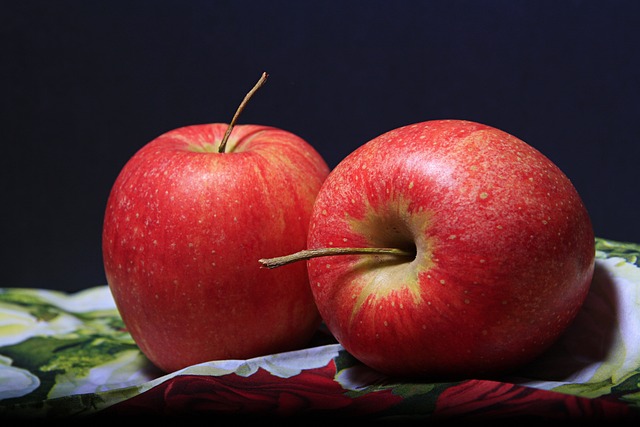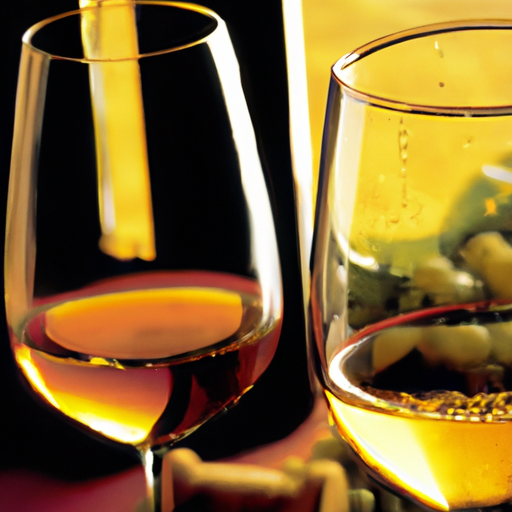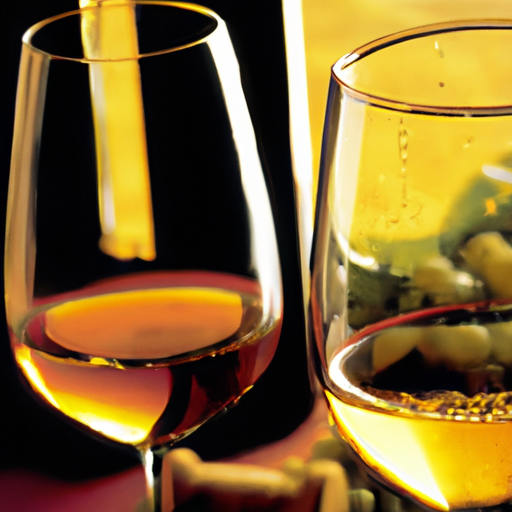Have you ever wondered what makes the perfect pairing of food and wine? Maybe you’ve struggled to find the right wine to complement a dish you were preparing, or perhaps you’ve experienced the joy of that magical combination where the flavors of the food and the wine blend harmoniously. Well, you’re in for a treat! In this article, we will delve into the art of food and wine pairing, exploring the different factors that contribute to a successful match and offering helpful tips and guidelines along the way. Get ready to discover a whole new level of culinary delight!
When it comes to food and wine pairing, it’s not just about randomly choosing any wine to go with any dish. There is a science and an art behind it. The goal is to enhance both the flavors of the food and the wine, creating a synergistic experience for your taste buds. Factors such as the acidity, sweetness, and intensity of both the food and the wine must be taken into consideration. For example, a light, delicate white wine can beautifully complement a subtly flavored seafood dish, while a bold, full-bodied red wine may be the perfect match for a rich, hearty steak. But fear not, for in the following sections, we will explore these factors in more detail, giving you the knowledge and confidence to create unforgettable food and wine pairings of your own. So, whether you’re a seasoned foodie or just starting out on your culinary journey, get ready to up your game and discover the art of food and wine pairing like never before!
Understanding Food and Wine Pairing
When it comes to enjoying a delicious meal, there is no denying that the right wine can truly enhance the dining experience. Food and wine pairing is an art, one that requires careful consideration of various factors to create the perfect harmony of flavors. In this article, we will delve into the world of food and wine pairing, exploring the factors to consider, the role of taste and texture, and how to match wine with specific cuisines. So grab your favorite bottle of wine, and let’s embark on this delightful journey together.
Factors to Consider
When it comes to pairing food and wine, there are several factors that you should take into consideration. The first factor is matching intensity. The intensity of both the food and wine should be balanced, where neither overwhelms the other. For example, a light-bodied wine might be overpowered by a heavily spiced dish, while a full-bodied wine could overpower a delicate dish. It’s essential to find a harmonious balance between the flavors and intensity of both the food and wine.
Another factor to consider is complementary flavors. Look for flavors in the food that will enhance and complement the flavors in the wine. For instance, if you’re serving a rich and buttery seafood dish, a crisp and acidic white wine can balance and elevate the flavors. On the other hand, if you’re serving a spicy dish, a slightly sweet wine can help to cool down the palate and provide a refreshing contrast.
Contrasting flavors can also create an exciting food and wine pairing. Sometimes, contrasting flavors can create a unique and memorable dining experience. For example, pairing a dry red wine with a tangy and creamy goat cheese can create a delightful contrast on the palate. The key is to find flavors that can interact with each other in a harmonious and interesting way.
Lastly, balancing sweetness and acidity is crucial when it comes to food and wine pairing. If your dish is on the sweeter side, it’s best to pair it with a wine that has enough acidity to balance the sweetness. On the other hand, if your dish is acidic or tart, a wine with a touch of sweetness can help to smooth out the flavors and provide a pleasant balance.
The Role of Taste and Texture
In addition to considering the factors mentioned above, both the taste and texture of the food are vital when selecting the right wine. The taste, including the flavors, sweetness, saltiness, bitterness, and acidity, can greatly influence the wine pairing.
When it comes to taste, it’s essential to select a wine that harmonizes with the overall flavor profile of the dish. For example, if you’re serving a dish that is rich and buttery, a wine with ample acidity can help to cut through the richness and cleanse the palate. Similarly, a spicy dish can be complemented by a slightly sweet wine to balance the heat.
The texture of the food also plays a significant role in wine pairing. The texture refers to the physical sensations experienced in the mouth, such as creaminess, crunchiness, and chewiness. For example, if you’re serving a dish with a creamy and velvety texture, a wine with a similar smoothness can create a harmonious pairing. On the other hand, a dish with crunchy textures can be complemented by a wine with a vibrant and lively mouthfeel.
Enhancing the Dining Experience
Pairing the right wine with food not only enhances the flavors of both, but it also elevates the entire dining experience. The right pairing can create a symphony of flavors on your palate, enhancing both the taste of the food and the characteristics of the wine.
Imagine savoring a perfectly grilled steak with a robust and full-bodied red wine that complements the richness of the meat. Or delighting in a delicate seafood dish with a crisp and refreshing white wine that enhances the flavors of the ocean. The right pairing can transport you to a world of gastronomic pleasure, where every bite and sip creates a harmonious and memorable experience.

Pairing Red Wine with Food
Red wine is renowned for its depth and complexity, making it a popular choice for pairing with a variety of dishes. However, not all red wines are created equal, and different types of red wine pair better with certain foods. Let’s explore some popular red wines and their ideal food pairings.
Bold Reds and Red Meat
Bold red wines, such as Cabernet Sauvignon, Merlot, and Syrah, are rich in flavor and tannins. These wines pair exceptionally well with red meat, such as beef, lamb, and game. The hearty and robust nature of these wines complements the richness and intensity of red meats, creating a harmonious balance. Whether you’re enjoying a succulent steak or a slow-cooked roast, a bold red wine can elevate the flavors and create a match made in heaven.
Light Reds and Poultry
If you’re opting for a lighter and more delicate red wine, such as Pinot Noir or Grenache, consider pairing it with poultry dishes. Light red wines have lower tannin levels and a more subtle flavor profile, making them a perfect match for lighter meats like chicken and turkey. The delicate flavors of these wines can enhance the natural flavors of the poultry without overpowering them.
Fruity Reds and Vegetarian Dishes
For vegetarian and plant-based dishes, fruity red wines, such as Beaujolais or Zinfandel, can be an excellent choice. These wines have a fruity and vibrant profile, with lower tannins that won’t overpower the flavors of vegetables and legumes. Whether you’re enjoying a hearty vegetable stew or a Mediterranean-inspired ratatouille, a fruity red wine can provide a refreshing and complementary accompaniment.
Tannic Reds and Rich Sauces
If you’re serving dishes with rich and flavorful sauces, tannic red wines, such as Barolo or Bordeaux blends, can be a perfect match. Tannic red wines have higher levels of tannins, which can help to cut through the richness of the sauce and cleanse the palate. Whether you’re indulging in a rich tomato-based pasta or a savory mushroom risotto, a tannic red wine can provide a perfect balance to the dish.

Pairing White Wine with Food
While red wine often takes the spotlight when it comes to food pairing, white wine offers its own unique and delightful matches. From crisp and refreshing whites to creamy and luscious varietals, there is a white wine to complement every dish. Let’s explore some popular white wines and their ideal food pairings.
Crisp Whites and Seafood
Crisp white wines, such as Sauvignon Blanc or Pinot Grigio, are known for their vibrant acidity and refreshing citrus flavors. These wines pair exceptionally well with seafood dishes, as they can complement and enhance the delicate flavors of fish and shellfish. Whether you’re enjoying a plate of fresh oysters or a grilled fillet of fish, a crisp white wine can provide a zesty and invigorating accompaniment.
Creamy Whites and Cheese
Pairing white wine with cheese can be a match made in heaven. Creamy white wines, such as Chardonnay or Viognier, have a rich and buttery profile that pairs perfectly with various types of cheese. From soft and creamy Brie to the sharp and nutty flavors of aged cheddar, a creamy white wine can create a delightful marriage of flavors. The richness of the wine can complement the creaminess of the cheese, creating a harmonious balance on the palate.
Sweet Whites and Spicy Dishes
Spicy dishes can be challenging to pair with wine, as the heat can overwhelm certain varietals. However, sweet white wines, such as Riesling or Gewürztraminer, can offer a perfect contrast to spicy flavors. The slight sweetness of these wines can help to cool down the palate and provide a refreshing balance to the heat. Whether you’re enjoying a spicy Thai curry or a fiery Szechuan dish, a sweet white wine can create a harmonious and enjoyable pairing.
Light Whites and Light Fare
For lighter and more delicate dishes, light white wines, such as Pinot Grigio or Albariño, can be an excellent choice. These wines have a crisp and clean profile, with subtle flavors that won’t overpower the dish. Whether you’re enjoying a fresh salad or a plate of grilled vegetables, a light white wine can provide a refreshing and complementary accompaniment.

Matching Wine with Specific Cuisines
In addition to pairing wine with specific types of dishes, it can also be interesting to explore how different cuisines can be paired with the right wine. Let’s take a look at some popular cuisines and their ideal wine matches.
Italian Cuisine and Wine
Italian cuisine is diverse, ranging from hearty pasta dishes to fresh seafood and flavorful sauces. When it comes to wine pairing, Italian cuisine offers a plethora of options. For tomato-based pasta dishes, such as spaghetti bolognese, a medium-bodied red wine, like Chianti, can be a great match. For creamy risotto or carbonara, a rich and buttery Chardonnay can enhance the flavors. For seafood dishes, such as linguine alle vongole, a crisp and acidic white wine, like Vermentino, can provide a refreshing contrast.
French Cuisine and Wine
French cuisine is renowned for its elegance, refined flavors, and meticulous preparation. French dishes often use rich ingredients and complex sauces, making them ideal candidates for wine pairing. When it comes to classic French dishes, such as Beef Bourguignon or Coq au Vin, a bold and full-bodied red wine, such as Bordeaux, can be a perfect match. For lighter dishes, such as quiche or salad Niçoise, a light and refreshing white wine, such as Sauvignon Blanc, can complement the flavors beautifully.
Asian Cuisine and Wine
Pairing wine with Asian cuisine can be a delightful adventure, as the flavors and spices can create interesting and complex pairings. For spicy Thai or Indian dishes, a slightly sweet and aromatic white wine, such as Gewürztraminer or Riesling, can balance the heat and provide refreshing relief. For Chinese dishes, such as Peking duck or sweet and sour chicken, a fruity and slightly tannic red wine, such as Pinot Noir or Beaujolais, can create a harmonious pairing.
Mediterranean Cuisine and Wine
Mediterranean cuisine offers a delightful array of flavors, from fresh seafood and herbs to tangy olive oil and sun-ripened tomatoes. When it comes to wine pairing, Mediterranean dishes can be complemented by a variety of wines. For grilled seafood or bruschetta, a crisp and citrusy white wine, such as Vermentino or Assyrtiko, can provide a refreshing and complementary accompaniment. For hearty dishes, such as slow-roasted lamb or moussaka, a full-bodied red wine, such as Syrah or Priorat, can enhance the flavors.

The Art of Dessert and Wine Pairing
No meal is complete without a little something sweet to end the night. Pairing wine with dessert can be a delightful art, as the flavors and textures can create unique and memorable experiences. Let’s explore some classic dessert and wine pairings that are sure to please the palate.
Sweet Wines and Chocolate
Chocolate and wine have long been considered a match made in heaven. The rich and intense flavors of chocolate can be beautifully complemented by sweet wines, such as Port or Late Bottled Vintage (LBV) Port. The dark and complex flavors of chocolate pair wonderfully with the rich and luscious profile of Port, creating a truly decadent experience. Whether you’re enjoying a piece of dark chocolate or a rich chocolate cake, a sweet wine can elevate the flavors and create a luxurious combination.
Late Harvest Wines and Fruit
For fruit-based desserts, such as fruit tarts or pies, late harvest wines can be an excellent choice. Late harvest wines are made from grapes that have been left on the vine longer, allowing them to develop higher sugar levels and concentrated flavors. The natural sweetness and vibrant fruit flavors of these wines can complement the freshness and acidity of fruit-based desserts. Whether you’re enjoying a slice of apple pie or a berry tart, a late harvest wine can provide a delightful pairing.
Sparkling Wines and Pastries
When it comes to pastries and desserts with delicate flavors, sparkling wines can create a harmonious pairing. The effervescence and crisp acidity of sparkling wines can cleanse the palate and balance the richness of pastries. Whether you’re enjoying a flaky croissant or a delicate fruit tart, a sparkling wine, such as Champagne or Prosecco, can provide a refreshing and celebratory accompaniment.
Fortified Wines and Cheese
Pairing wine with cheese is always a delightful endeavor, and fortified wines can create a perfect match. Fortified wines, such as Sherry or Madeira, have higher alcohol content and a unique flavor profile that pairs exceptionally well with cheese. The nutty and caramel notes of these wines can complement the creamy and salty flavors of cheese, creating a delightful contrast. Whether you’re enjoying a tangy goat cheese or a rich and robust blue cheese, a fortified wine can create a harmonious combination.

Tips for Food and Wine Pairing at Home
Now that you have a better understanding of food and wine pairing, here are some tips to help you create delightful combinations at home:
Experiment with Different Combinations
The world of food and wine pairing is vast, with countless possibilities to explore. Don’t be afraid to experiment with different combinations and flavors to find your perfect match. Try pairing wines of different styles and varieties with various dishes, and let your taste buds be the judge. By experimenting, you may discover new and exciting flavor combinations that you never thought possible.
Consider Regional Pairings
When selecting wine for a particular dish, consider the regionality of both the wine and the cuisine. Wines from a specific region often pair exceptionally well with dishes from that same region. For example, an Italian Chianti can be a great match for a classic pasta dish, while a Spanish Tempranillo can complement a plate of tapas. Regional pairings can create a sense of authenticity and harmony in the dining experience.
Balance Flavors with Wine
When pairing food and wine, aim for balance. Consider the flavors and intensity of both the food and the wine and look for combinations that create a harmonious balance. If the dish is rich and heavy, opt for a wine with enough acidity to cut through the richness and provide a refreshing contrast. If the dish is light and delicate, choose a wine that won’t overpower the flavors.
Don’t Forget Cheese and Desserts
Cheese and desserts are often overlooked when it comes to food and wine pairing, but they can create some of the most enjoyable combinations. Consider the flavors and textures of cheese when selecting the wine, aiming for a complementary match. For desserts, consider the sweetness and richness of the dish and pair it with a wine that can either contrast or enhance the flavors.
Seek Expert Advice
If you’re unsure about which wine to pair with a particular dish, don’t hesitate to seek expert advice. Wine professionals, such as sommeliers, can provide valuable guidance and recommendations based on their expertise and knowledge. Whether you’re dining at a restaurant or attending a wine tasting, don’t be afraid to ask for recommendations and explore new wines with the guidance of an expert.
In conclusion, the art of food and wine pairing is a delightful journey of flavors and sensations. By considering the factors of matching intensity, complementary and contrasting flavors, and balancing sweetness and acidity, you can create harmonious combinations that enhance the dining experience. Whether you’re pairing red wine with red meat or white wine with seafood, each pairing offers a unique and memorable experience. From Italian and French cuisines to Asian and Mediterranean dishes, each cuisine presents its own possibilities for exciting wine pairings. And don’t forget the art of dessert and wine pairing, where sweet wines can complement the richness of chocolate while sparkling wines can enhance the delicacy of pastries. So next time you sit down to enjoy a delicious meal, remember to consider the wine as an integral part of the experience. Cheers to discovering the art of food and wine pairing!
